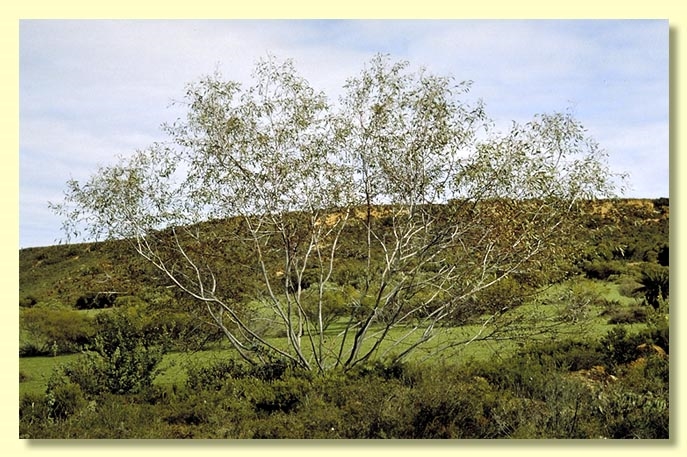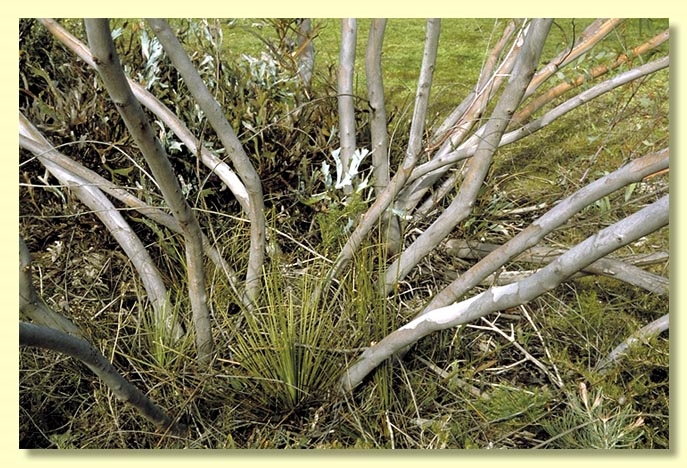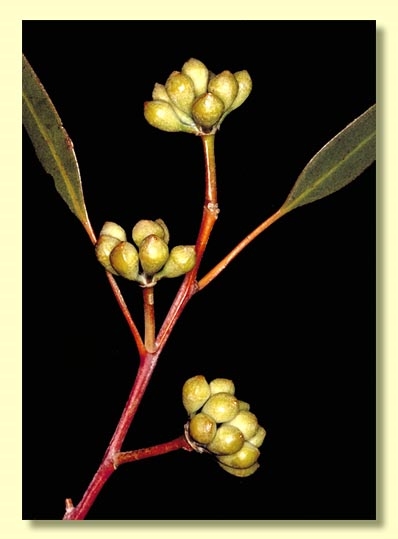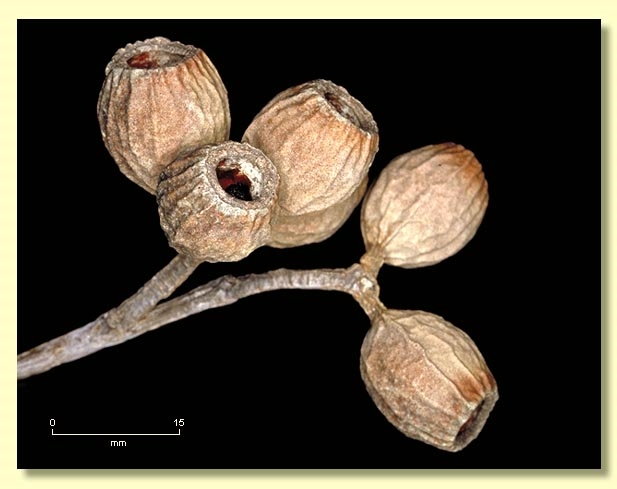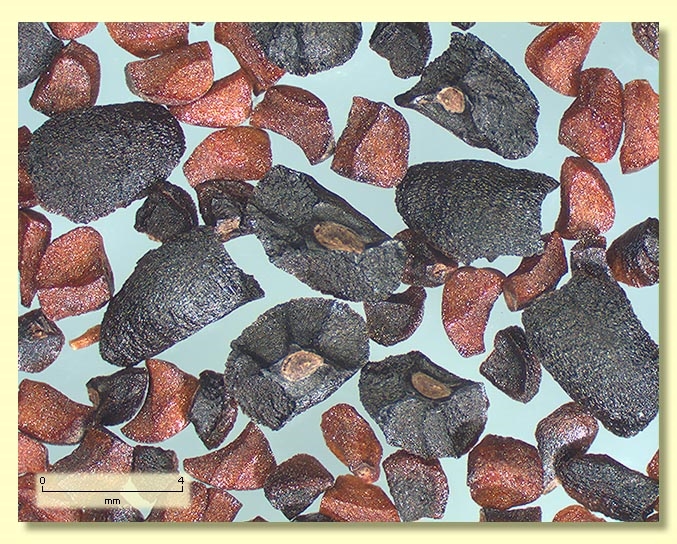Euclid - Online edition
Eucalyptus pendens
Eucalyptus | Eucalyptus | Longistylus | Frutices | Muricatae
Bark smooth, grey and pinkish.
Branchlets initially very glaucous, weathering red and shiny; lacking oil glands in the pith.
Juvenile growth (coppice or field seedlings to 50 cm): stems rounded in cross-section, glaucous or not; juvenile leaves opposite at lowest nodes only, petiolate and alternate after that, oblong to ovate, 4–9 cm long, 2–5 cm wide, dull, green to bluish green.
Adult leaves alternate, petiole 1.5–3.5 cm long; blade lanceolate, 5.5–10 cm long, 1–1.8 cm wide, base tapering to petiole, margin entire, apex pointed and often uncinate, concolorous, glossy, green, side veins acute, reticulation dense, intramarginal vein remote from margin, oil glands obscure or absent.
Inflorescence axillary unbranched, peduncles 1–2.3 cm long, buds 9 or 11 per umbel, pedicel 0.2–0.7 cm long. Mature buds obovoid to pyriform, 0.7–1 cm long, 0.5–0.7 cm wide, scar absent, the single operculum usually rounded to flattened and often apiculate, stamens inflexed, anthers reniform, versatile, dorsifixed, dehiscing by oblique slits that are not confluent apically or are rarely confluent, style long and straight, stigma tapered, locules 4, the placentae each with 2 vertical rows of ovules. Flowers white.
Fruit pedicels 0.1–0.5 cm long, barrel-shaped to truncate-globose or cupular, 1.1–2 cm long, 1.3–1.6 cm wide, disc usually descending, rarely level, valves 4, enclosed.
Seeds blackish brown, 3–5 mm long, obliquely pyramidal, dorsal surface minutely roughened, ventrally ridged, hilum terminal.
Cultivated seedlings (measured at ca node 10): cotyledons reniform; stems rounded in cross-section, glaucous or not; leaves sessile, amplexicaul, broadly elliptical and discolorous for 4 to 6 nodes then becoming petiolate, concolorous, still opposite at node 10–11, ovate, 6–9 cm long, 3–5 cm wide, dull green to bluish green.
Flowering has been recorded in May, August, September and October.
A small to tall mallee endemic to Western Australia, found only on sandplains and on some lateritic breakaways in the Badgingarra area. The stems are smooth, crowns sparse and pendulous and the adult leaves glossy green.
Eucalyptus pendens belongs in Eucalyptus subgenus Eucalyptus series Muricatae, a group characterised by smooth bark, buds with a single operculum (hence no operculum scar), reniform anthers that shed pollen by two oblique slits that are not confluent apically, ovules arranged in two rows on the placenta, pyramidal seeds, wrinkled but not ribbed fruit and seedling leaves opposite for up to ca 10 nodes.
E. pendens is most closely related to only two species, E. sepulcralis and E. exilis. E. pendens and E. sepulcralis have the extraordinary habit of tall slender finally drooping stems. They are far emergent above the surrounding sclerophyllous heath. E. sepulcralis occurs far to the south only in the Fitzgerald River National Park and nearby hills. It differs from E. pendens in the taller habit, larger buds and fruits, and long peduncles and pedicels. The two species are closely related to E. exilis, a mallee with comparatively dense crown, which occurs disjunctly from Boyagin Rock northwards to Bindoon and north-east of Mt Lesueur. E. exilis is of lower stature and has smaller buds and fruit on shorter erect peduncles and pedicels.

